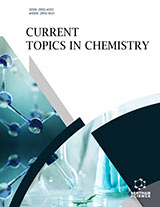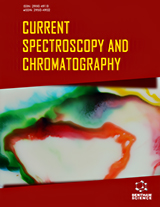Abstract
Organic germanium compounds, such as bis-beta-carboxyethylgermanium sesquioxide (“Ge-132”), have attained widespread distribution – particularly in self-medication – and are applied as tonics due to their presumed anticancer activities. In general, the toxicity of this particular organo-germanium compound is low. In contrast to this, acute and chronic toxic effects of inorganic germanium dioxide (GeO2) have been demonstrated. In this paper, chloride-generation headspace solid-phase microextraction (SPME) coupled with gas chromatography-mass spectrometry (GC-MS) is proposed as a technique for the determination of trace amounts of GeO2 in Ge-132. This method takes advantage of the fact that Ge-132 is not able to generate volatile species upon reaction with conc. HCl. The conditions for the generation of germanium chloride (GeCl4), such as SPME fibre selection, extraction time and HCl concentration were investigated. The detection limit was established at 0.28 μg/ml (as Ge). Thus, this approach provides a novel, simple and fast platform for the determination of inorganic Ge in organogermanium formulations.
Keywords: Germanium dioxide, Ge-132, speciation, SPME, chloride generation, GC-MS
Current Analytical Chemistry
Title:Determination of Trace Inorganic Germanium in bis-beta-Carboxyethylgermanium Sesquioxide by Headspace Solid-Phase Microextraction and Gas Chromatography – Mass Spectrometry
Volume: 9 Issue: 2
Author(s): Evangelia N. Tzanetou, Konstantinos M. Kasiotis, Nikolaos S. Thomaidis and Erwin Rosenberg
Affiliation:
Keywords: Germanium dioxide, Ge-132, speciation, SPME, chloride generation, GC-MS
Abstract: Organic germanium compounds, such as bis-beta-carboxyethylgermanium sesquioxide (“Ge-132”), have attained widespread distribution – particularly in self-medication – and are applied as tonics due to their presumed anticancer activities. In general, the toxicity of this particular organo-germanium compound is low. In contrast to this, acute and chronic toxic effects of inorganic germanium dioxide (GeO2) have been demonstrated. In this paper, chloride-generation headspace solid-phase microextraction (SPME) coupled with gas chromatography-mass spectrometry (GC-MS) is proposed as a technique for the determination of trace amounts of GeO2 in Ge-132. This method takes advantage of the fact that Ge-132 is not able to generate volatile species upon reaction with conc. HCl. The conditions for the generation of germanium chloride (GeCl4), such as SPME fibre selection, extraction time and HCl concentration were investigated. The detection limit was established at 0.28 μg/ml (as Ge). Thus, this approach provides a novel, simple and fast platform for the determination of inorganic Ge in organogermanium formulations.
Export Options
About this article
Cite this article as:
N. Tzanetou Evangelia, M. Kasiotis Konstantinos, S. Thomaidis Nikolaos and Rosenberg Erwin, Determination of Trace Inorganic Germanium in bis-beta-Carboxyethylgermanium Sesquioxide by Headspace Solid-Phase Microextraction and Gas Chromatography – Mass Spectrometry, Current Analytical Chemistry 2013; 9 (2) . https://dx.doi.org/10.2174/1573411011309020010
| DOI https://dx.doi.org/10.2174/1573411011309020010 |
Print ISSN 1573-4110 |
| Publisher Name Bentham Science Publisher |
Online ISSN 1875-6727 |
 10
10
- Author Guidelines
- Bentham Author Support Services (BASS)
- Graphical Abstracts
- Fabricating and Stating False Information
- Research Misconduct
- Post Publication Discussions and Corrections
- Publishing Ethics and Rectitude
- Increase Visibility of Your Article
- Archiving Policies
- Peer Review Workflow
- Order Your Article Before Print
- Promote Your Article
- Manuscript Transfer Facility
- Editorial Policies
- Allegations from Whistleblowers
- Announcements


























